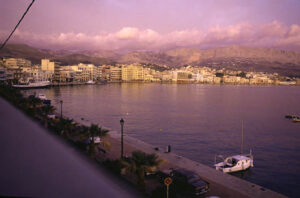Geographical & Historical Outline of Chios
Chios lies near the Turkish coast, south of Lesvos and north of Samos and Ikaria islands.
It has an area of 842 square kilometers and 213 kilometers of coastline.
A large part of its terrain is mountainous, mainly in the north of the island, the highest peaks being Pelinaion (1.297 meters) and Oros (1.186 meters).
The island has lush vegetation with pine woods and bushes in the mountains and fruit-trees and vines in the plains.
The main product of the island, found only on Chios, is mastic, which has been grown since ancient times in the “mastic villages” in the south.
There are also factory units on Chios producing delicious preserves.
Together with the neighbouring islands of Psara, Antipsara, Inousses and Pasas, the island forms the prefecture of Chios.
Geographical & Historical Outline of Chios
Chios was inhabited in very ancient times by Pelasgians, Karians and Leleges and later by Ionians from Attica.
It developed its own culture and was at its zenith during the 6th c. BC. Many scholars believe that Homer was born on Chios.
The island was conquered by the Persians and liberated in 179 BC, when it became a member of the First Athenian Confederacy.
It was then conquered by the Spartans, followed later by the Macedonians and finally the Romans.
During the Byzantine period it was the victim of many pirate raids.
It was captured by the Franks after 1204 and in 1344 passed into the hands of the Genoese, when it again prospered, thanks to the mastic trade.
Chios felt to the Turks in 1566 and played an active part in the Greek War of Independence of 1821.
On 20 March 1822, the Turks landed forces on the island and slaughtered 30.000 of the inhabitants taking a further 40.000 prisoner.
The episode is known as the “Massacre of Chios” and provoked a storm of protest European public opinion, inspiring Victor Hugo’s poem “The Greek Boy” and moving painting by Delacroix, now in the Louvre Museum in Paris.
The island was liberated along with the other East Aegean islands in November 1912.


